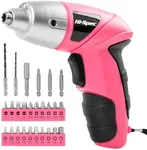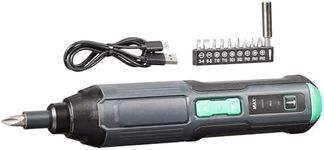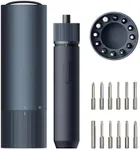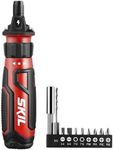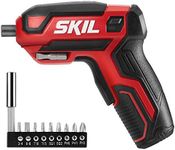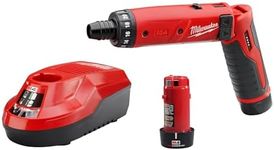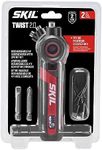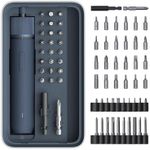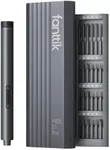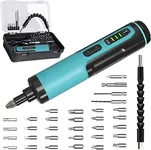Buying Guide for the Best Cordless Screwdrivers
Choosing the right cordless screwdriver can make your DIY projects and home repairs much easier and more efficient. When selecting a cordless screwdriver, it's important to consider several key specifications to ensure you get a tool that meets your needs. Understanding these specs will help you make an informed decision and find the best fit for your tasks.VoltageVoltage indicates the power of the cordless screwdriver. Higher voltage means more power, which is useful for tougher jobs. Cordless screwdrivers typically range from 3.6V to 20V. For light tasks like assembling furniture or small repairs, a lower voltage (3.6V to 7.2V) is sufficient. For more demanding tasks, such as drilling into harder materials, a higher voltage (12V to 20V) is better. Choose the voltage based on the type of work you plan to do most often.
Battery TypeThe battery type affects the performance and longevity of the cordless screwdriver. The most common types are Nickel-Cadmium (NiCd) and Lithium-Ion (Li-Ion). NiCd batteries are cheaper but heavier and have a shorter lifespan. Li-Ion batteries are lighter, hold a charge longer, and have a longer lifespan, making them a better choice for frequent use. If you need a reliable and long-lasting tool, opt for a Li-Ion battery.
TorqueTorque is the force the screwdriver applies to turn screws. Higher torque is necessary for driving screws into harder materials. Cordless screwdrivers usually have adjustable torque settings, allowing you to control the force. For light tasks, lower torque (around 3-5 Nm) is sufficient. For heavier tasks, such as working with dense wood or metal, higher torque (10-20 Nm) is needed. Consider the materials you'll be working with to determine the appropriate torque.
SpeedSpeed, measured in rotations per minute (RPM), determines how fast the screwdriver can drive screws. Variable speed settings allow for greater control. Lower speeds (200-400 RPM) are suitable for delicate tasks, while higher speeds (1000+ RPM) are better for drilling and driving screws quickly. If you need versatility, look for a model with adjustable speed settings.
Chuck SizeThe chuck size determines the maximum diameter of the bit that the screwdriver can hold. Common sizes are 1/4 inch and 3/8 inch. A 1/4 inch chuck is suitable for most household tasks, while a 3/8 inch chuck can handle larger bits for more demanding jobs. Choose the chuck size based on the types of bits you plan to use.
ErgonomicsErgonomics refers to how comfortable and easy the screwdriver is to use. Look for features like a comfortable grip, balanced weight, and easy-to-reach controls. A well-designed ergonomic screwdriver reduces fatigue and increases efficiency, especially during extended use. Consider how the tool feels in your hand and whether it will be comfortable to use for long periods.
Additional FeaturesAdditional features can enhance the functionality of the cordless screwdriver. These may include LED lights for better visibility in dark areas, a built-in bit holder for convenience, or a quick-change chuck for easy bit swapping. While not essential, these features can make your work easier and more efficient. Think about which additional features would be most beneficial for your specific needs.
